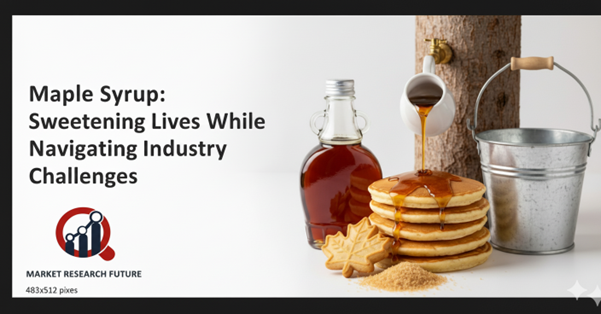Maple syrup: Organizations can improve productivity by addressing regulatory challenges

Maple syrup is more than just a breakfast favorite—it’s a symbol of tradition and craftsmanship, especially in the Northeastern United States. Drizzled over pancakes, waffles, French toast, or even ice cream, its rich sweetness has delighted generations. But behind every golden drop is a fascinating process rooted in nature and careful production.
Maple Syrup: From Tree to Table
When you pick maple trees in late winter or early spring, you get their sap, which is the first ingredient in maple syrup. A small hole is carefully made in the tree so that the sap can flow out. The color and taste of this liquid change with the seasons and weather. Sap that is collected early in the season is lighter and softer, while sap that is collected late in the season or heated by fire is darker and stronger.
Getting the sap is an art in and of itself. In the past, buckets were hung on spouts to catch the flow. These days, though, most makers use tubing systems that collect sap more efficiently. After being gathered, the sap is carefully boiled. It is boiled down for several hours until it turns into a thick, tasty sauce.
The finished product is divided into various types based on its color, flavor, and consistency. Lighter syrups have milder flavors, while darker syrups have stronger, more complex flavors.
Varieties of Maple Trees
Several types of maple trees, like the sugar maple, black maple, red maple, silver maple, and white maple, can be used to make maple syrup. Because each species has a slightly different taste and color, syrup makers can make syrups that are unique.
Pure maple syrup usually has a natural balance of sweetness and taste. Commercial-grade syrups, on the other hand, may go through more processing to make them more stable and consistent.
Industry Challenges and Opportunities of the Maple Syrup Market
Even though maple syrup is still a popular product, the industry is having trouble with regulations and production. Changes in grade standards, weather, and sap flow all affect output and quality.
Adopting sustainable gathering methods, investing in modern collection and boiling technologies, and knowing how to navigate regulatory standards well can all help organizations be more productive.
The Future of Maple Syrup
Maple syrup is both a cultural treasure and an economic opportunity. Producers can keep quality high while meeting rising demand by mixing old and new ideas. From tapping the first tree for sap to putting the last bottle of syrup in a bottle, the process shows how nature, skill, and careful management work together. The business can continue to grow with the right plans, making sure that this sweet treat will be on tables for many years to come.

Leave a Comment